Shaggy mane mushrooms are an excellent edible wild mushroom, but you need to act quickly. The moment you spot them in the wild, make a plan, or pass them by. They need to be prepared or stored within 2-4 hours (preferably less) before they start to break down and spoil. Very quickly, these mushrooms will turn into a black, inky mess in your refrigerator. You must cook them right away or clean and freeze them.
Sometimes, shaggy mane mushrooms show up in spring, but more often, they are a fall species. They often grow in massive clusters or scattered groupings, and it’s not uncommon to collect 50-60 shaggy manes at once from a single productive spot. This is another reason you must have a plan before you pick them — that’s a lot of mushrooms to cook or use up in a very short time period.
The mushroom’s flesh tastes mild and is very creamy. It isn’t a mushroom with a super strong flavor; it is more delicate and refined. When the shaggy manes are young buttons, they are actually a bit crunchy.
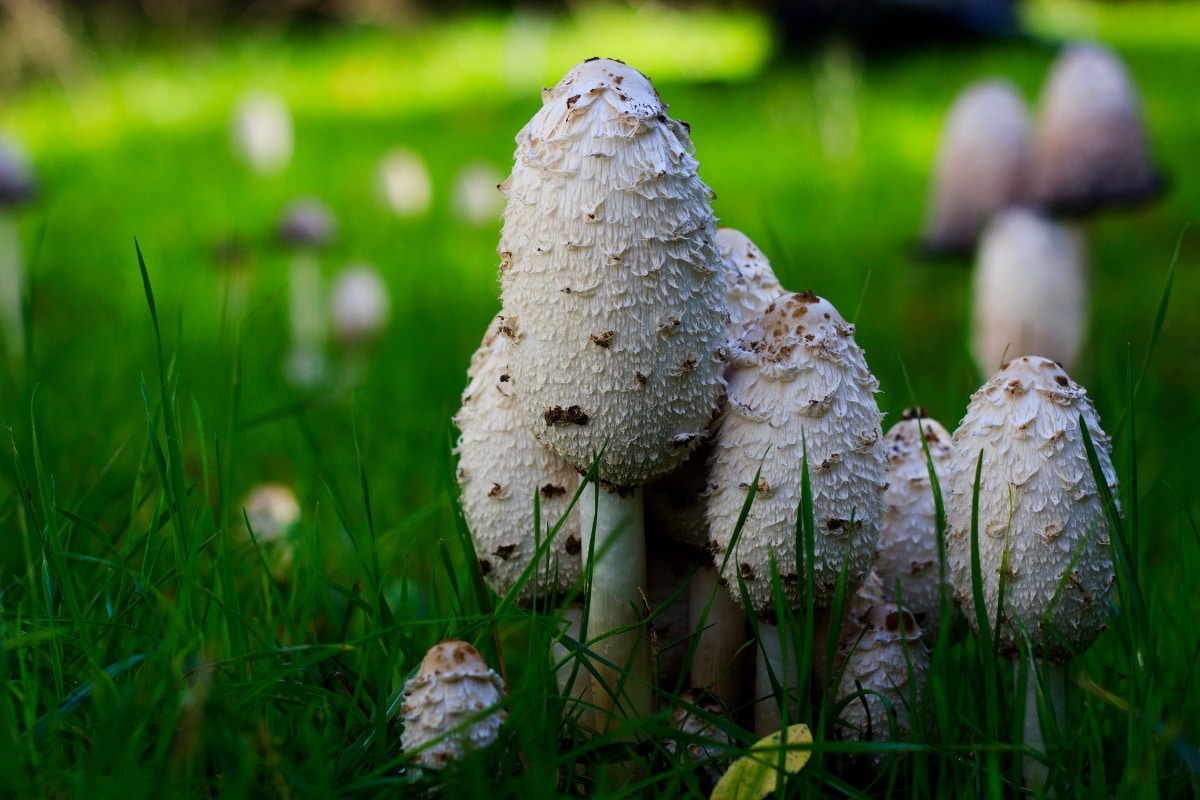
Jump to:
- What Are Shaggy Mane Mushrooms
- How To Get Shaggy Mane Mushrooms
- How To Choose Shaggy Mane Mushrooms
- Shaggy Mane Mushrooms Short-Term Storage, AKA How To Prevent Deliquescing
- How to Clean Shaggy Mane Mushrooms
- Shaggy Mane Safety and Serving Tips
- Best Ways to Cook Shaggy Mane Mushrooms
- Preserving Shaggy Manes for Later Use
- Common Questions About Cooking Shaggy Mane Mushrooms
What Are Shaggy Mane Mushrooms
The shaggy mane mushroom (Coprinus comatus) is nicknamed the “shaggy ink cap” and “lawyer’s wig” because its white caps look just like those layered curls on old courtroom wigs.
These mushrooms get big and really stand out in fields, yards, and meadows. The caps range from 2 to 6 inches tall and are very bright white with distinctive shaggy scales. The caps start cylindrical, like tall mushroom stalks with long hats pulled down over them. Up and down the stalk are shaggy scales that give it a fluffy appearance.
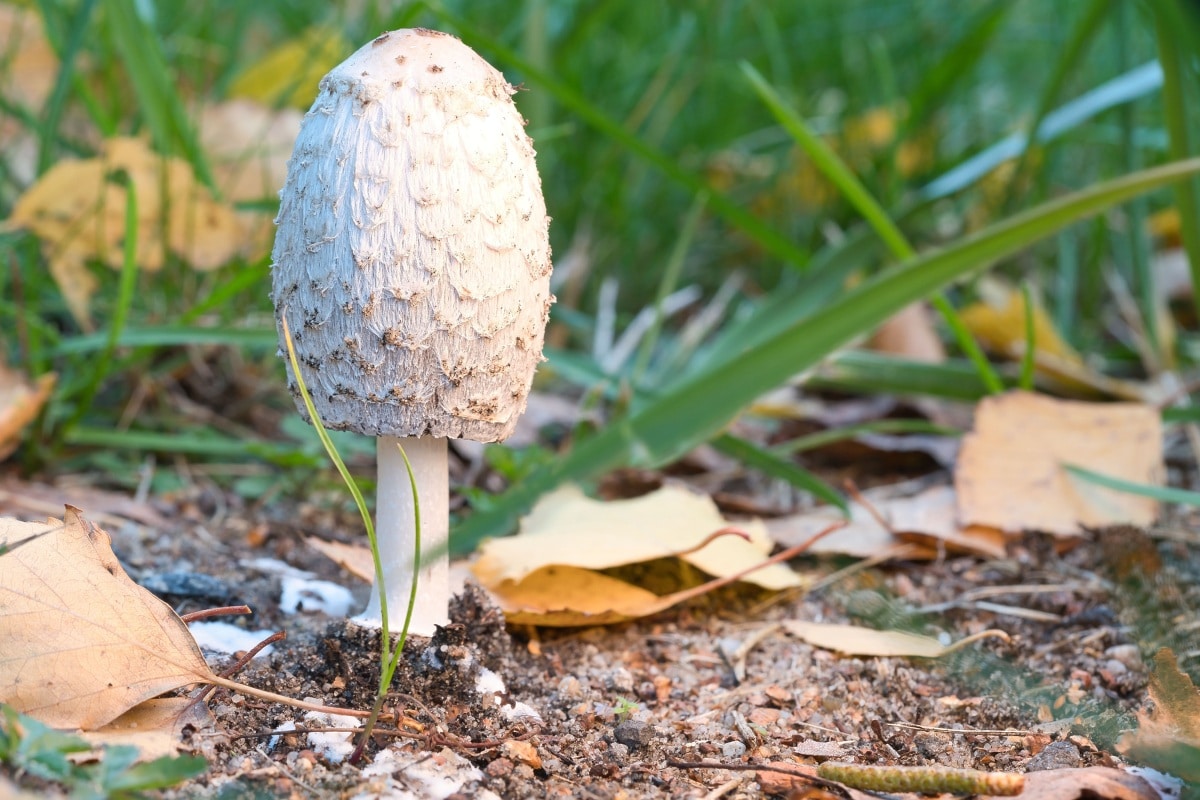
The stem is long, whitish, elegant, and hollow. Often, there is a loose whitish ring around the upper portion of the stem. This might get washed away in heavy rain or deteriorate and fall off. They should never show a bulbous volva, as that indicates a potentially poisonous Amanita species.
Very quickly, though, the edges start to turn upwards to give it a more bell shape. Then, the edges turn black and the entire mushroom dissolves into a black inky goo.
The shaggy mane’s life cycle includes an amazing transformation called auto-digestion or “deliquescence.” The mushroom turns black and melts into an inky substance within hours after releasing spores or getting picked. This self-digestion starts at the edge of the gills and cap and moves across the rest of the mushroom like a tidal wave. The gills change color throughout this process – from white to pink and finally black.
These mushrooms are very widespread. They grow from the ground (never from wood or logs), and you’ll see them growing in city parks, lawns, along roads, in pastures, open woods, and areas with disturbed soil. The mushrooms show up in summer and fall, especially after rain hits, either alone or in clusters or huge scattered groupings.
The mushroom’s entire above-ground portion is edible, including the cap and stem. Most people prefer the caps. While you’re harvesting the mushrooms, cut off the lower end of the stem to prevent dirt from spreading to other mushrooms.
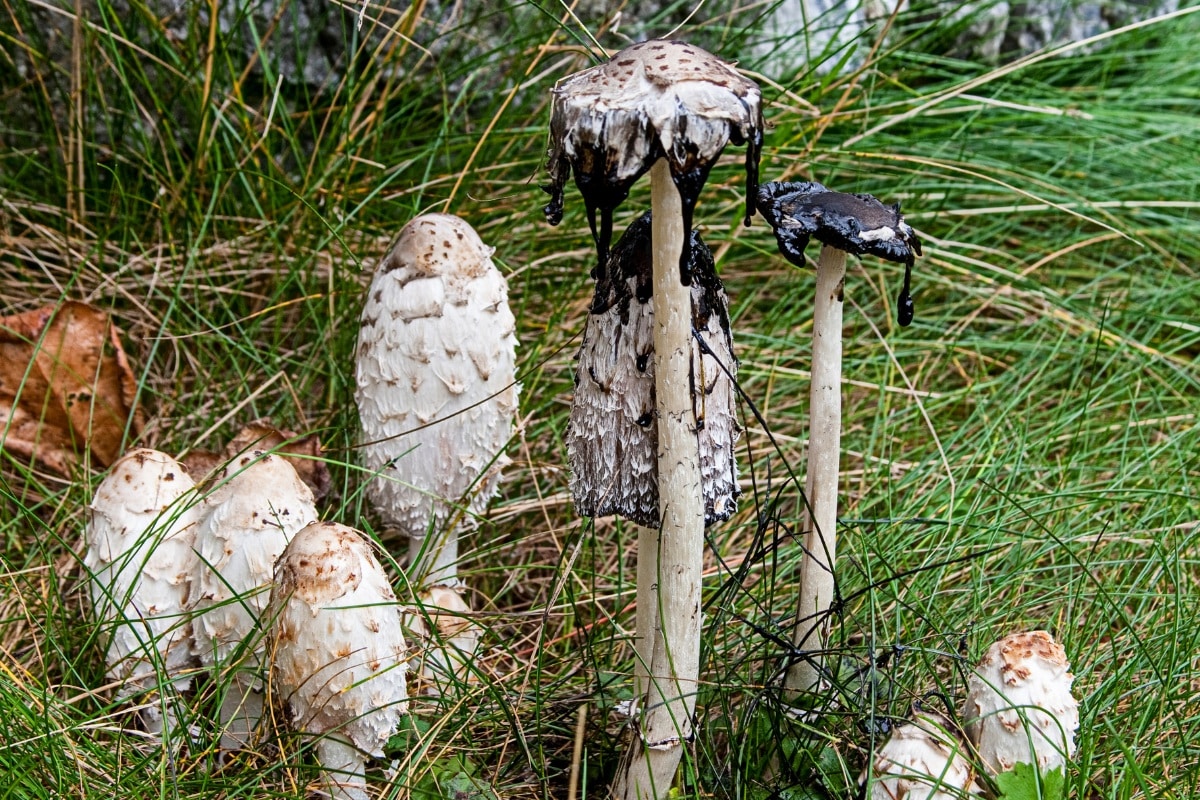
How To Get Shaggy Mane Mushrooms
The shaggy mane is available foraged or home-grown. It is virtually impossible to find in stores or even farmers’ markets because of its exceptionally short shelf life. It’s just not practical to have these for sale.
Foraged
Foraging is the most reliable way to get shaggy manes. However, foraging for them does come with some caveats and slight complications. There are some problematic lookalikes that, while not deadly poisonous, will cause you significant distress.
If you’re interested in foraging these delicious mushrooms, check out our guide: All About Shaggy Mane (Coprinus Comatus) Mushroom.
Shaggy manes pop up from late summer through fall, and sometimes last into early winter in milder climates. They often show up after rain, growing alone or in groups. Stay away from roadsides, industrial areas, or places with pesticides because these mushrooms can absorb heavy metals.
When you forage shaggy manes, have a separate container or basket to gather them. They are extremely delicate and are easily squished. Do not put them with other mushrooms that may crush them. They can also crush each other if they’re piled too high on top of each other. The best option is a wide, shallow basket, especially if you’re collecting lots of them.
The biggest problem with them getting squished in transit is that as soon as they are bruised, they start breaking down and deliquescing. If you’re not super careful, by the time you get home, all you’ll have is an inky, pulverized mess that cannot be saved. Other mushrooms can handle a bit of jostling or cramming, but not these.
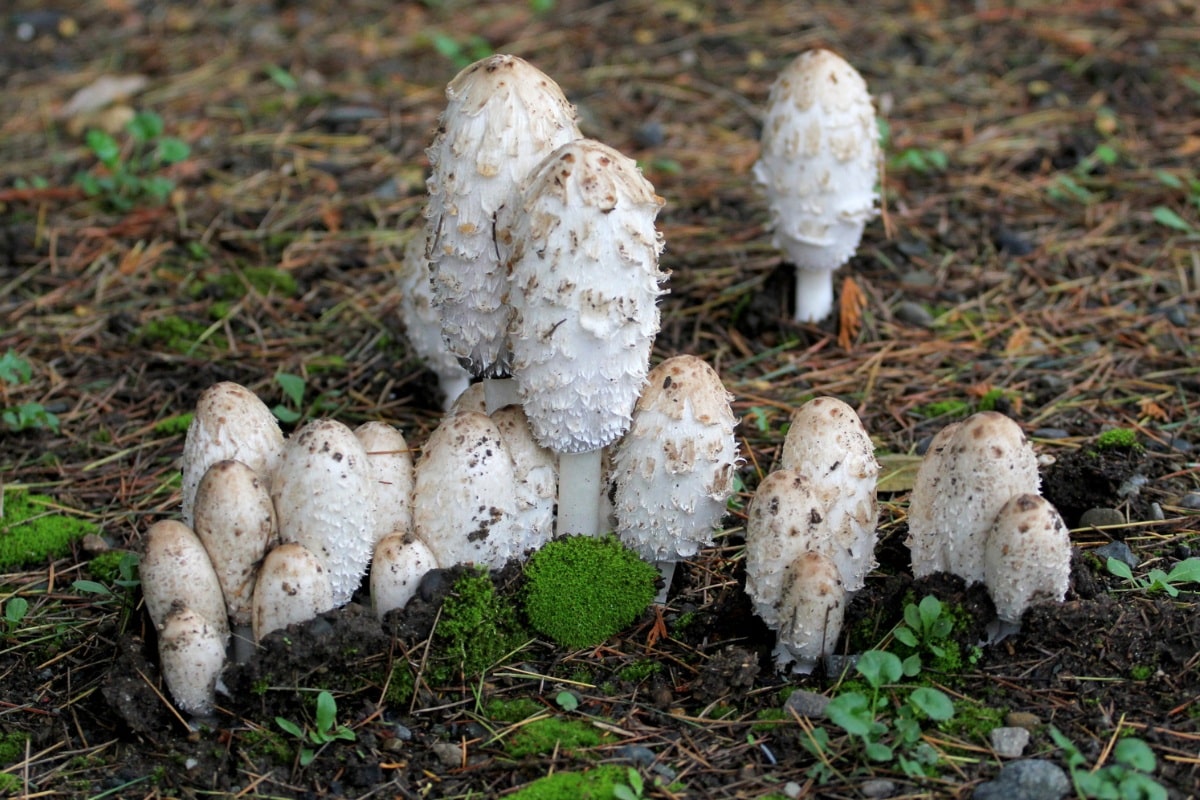
Grown
Growing your own shaggy mane mushrooms is a super reliable way to get these edible mushrooms. They’re one of the easier mushroom species to grow; you just have to be prepared to harvest them at exactly the right moment. You can grow them both indoors and outdoors.
This guide by FreshCap details exactly how to grow shaggy mane mushrooms indoors and outdoors.
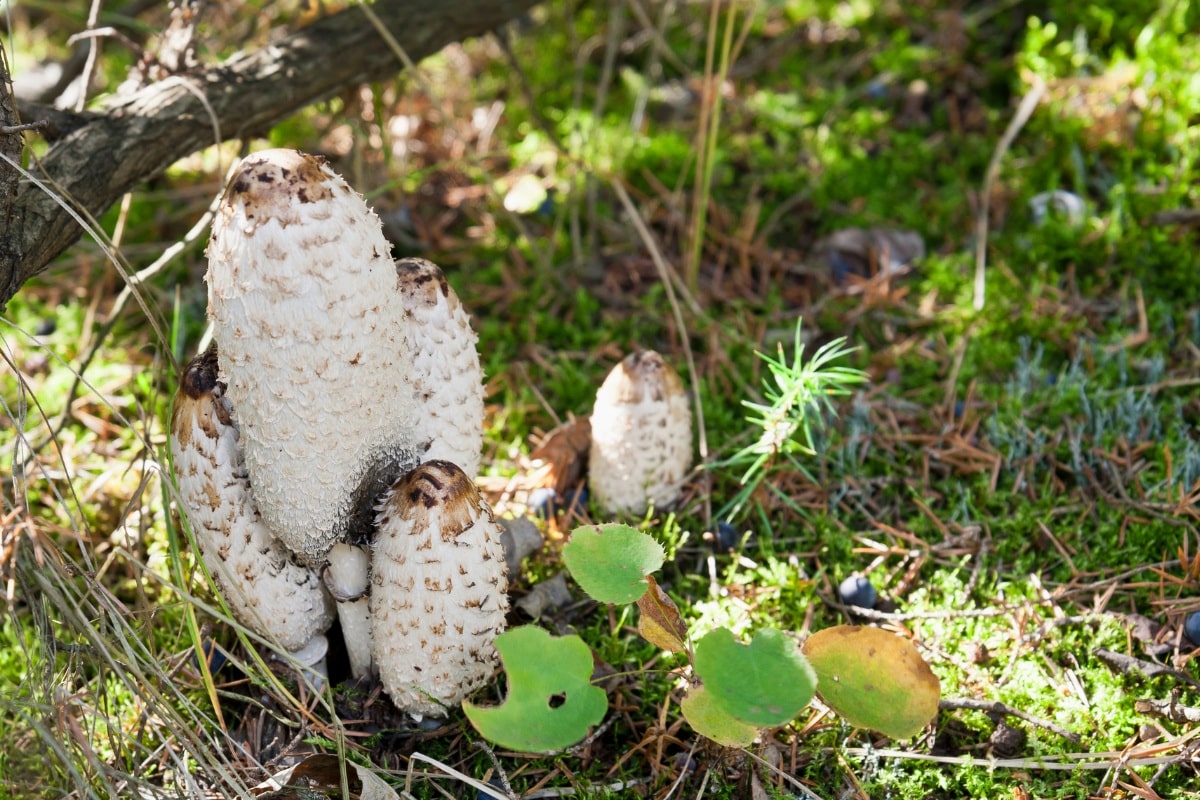
How To Choose Shaggy Mane Mushrooms
As we’ve mentioned several times, these mushrooms start going bad very quickly. So, choosing good specimens to start with helps a lot. It’s always best to look for the youngest mushrooms; they’ll be fresh and more sturdy.
The caps should be pristine white with brown or tan scales that stick up prominently, giving them their characteristic shaggy look. The gills should be white or slightly pink. If the mushroom has any black on the cap, gills, or stem, it’s starting to spoil. Usually, the breakdown starts at the edges of the gills and sweeps across the rest of the mushroom. But, sometimes, it will show up first in other places, especially if it’s been handled too much or bruised in other ways, like by animals.
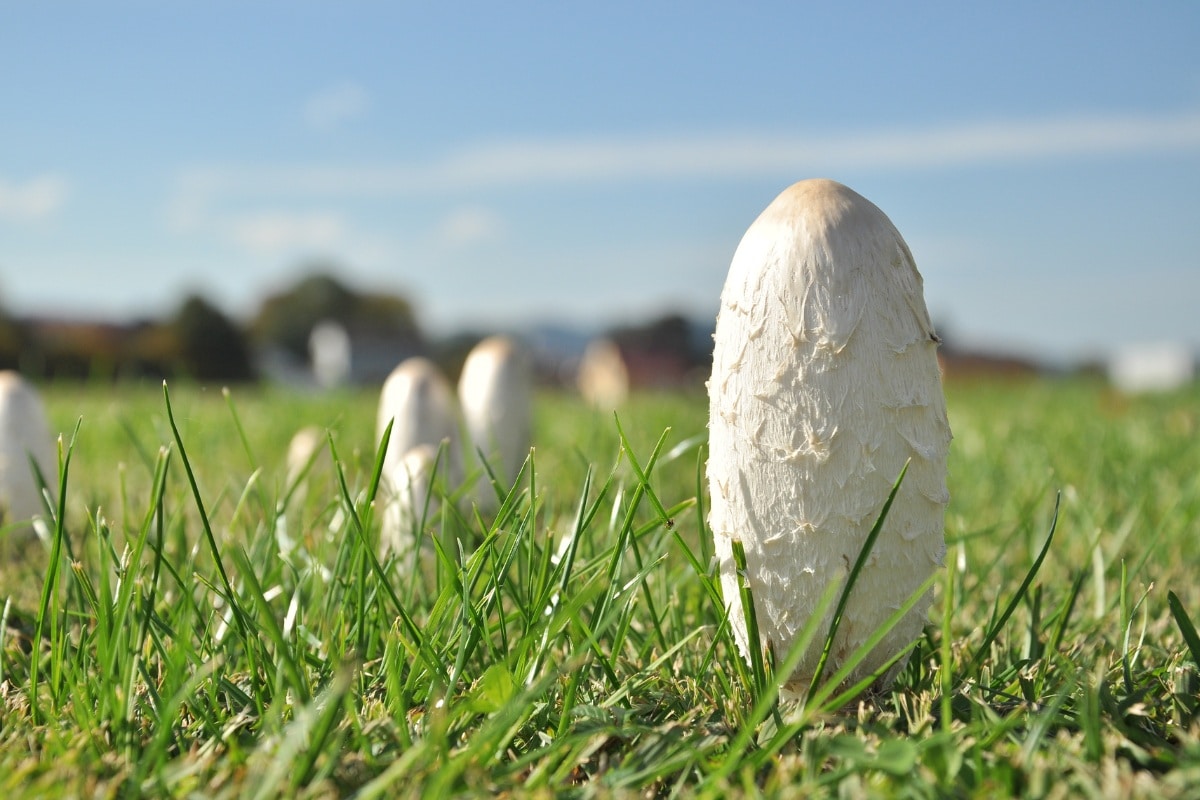
Shaggy manes can be picked when they’re super young and just emerging from the ground. They’ll have shorter stems at this time, and that’s fine. In fact, that’s the perfect time to pick them, before the stem gets very tall, and the cap is still close around the stem
If you let them grow longer, they’ll get taller and slightly bigger. But, the longer they grow, the closer to decay they get (and it happens fast!). Usually it isn’t worth it to wait because by the time you make it back, they may be starting to melt already.
A good way to tell the age of the mushroom is to check the edge of the cap. If the cap edge is still curved inwards to the stem, the mushroom is young and great to harvest. If the edge of the cap is even slightly starting to pull away from the stem, the mushroom is beginning its deliquesce process. You can pick these, but they may not make it home okay.
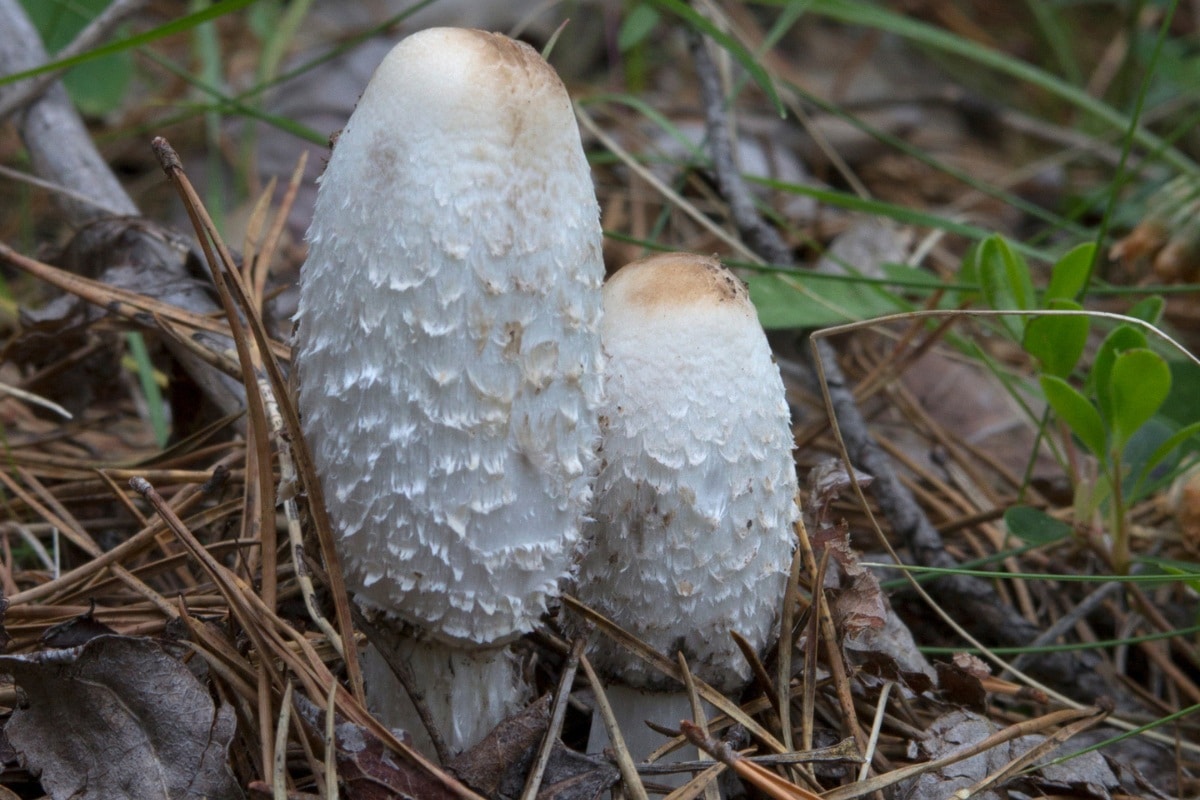
If the bottom edge of the cap is not white and is instead brownish, gray, or black, it is also on its way to decomposition. But, it’s only just started. These are okay to harvest if you are going to use them very, very quickly. They will not have a long shelf life.
Catching these mushrooms in their prime can be tricky. Mostly, because their prime is when they just emerge, so you have to spot them quickly. But the good thing is, they usually fruit in such massive numbers that it’s easy to find a good bunch among all the candidates.
The ideal shaggy mane:
- All white cap with shaggy scales
- All white stem
- Edges of the cap are still closed around the stem
- No bruising/black markings/inkiness
Fresh shaggy mane mushrooms should feel firm and have a dry surface. Watch out for these warning signs:
- Moisture content that’s too high (i.e. soggy mushrooms)
- Bad or sour smells
- Soft or mushy texture
- Unusual discoloration not related to natural deliquescence (Deliquescence (turning inky) is different from spoilage)
Use a wide, shallow basket when picking multiple mushrooms. This stops them from getting crowded and bruised. If the mushrooms are packed too tightly, it will speed up the deliquescence process.
Timing makes all the difference with these mushrooms. As soon as you pick them, you should be thinking of how to prepare or preserve them. You need to cook or preserve them (even if it’s just putting them in a cooler or refrigerator) within an hour of picking, unless you want them turning inky. The very young caps will last a bit longer, but within a few hours, they will also start to darken.
Refrigeration just slows down the deliquescence process – it doesn’t stop it. You should only collect what you’ll use right away.
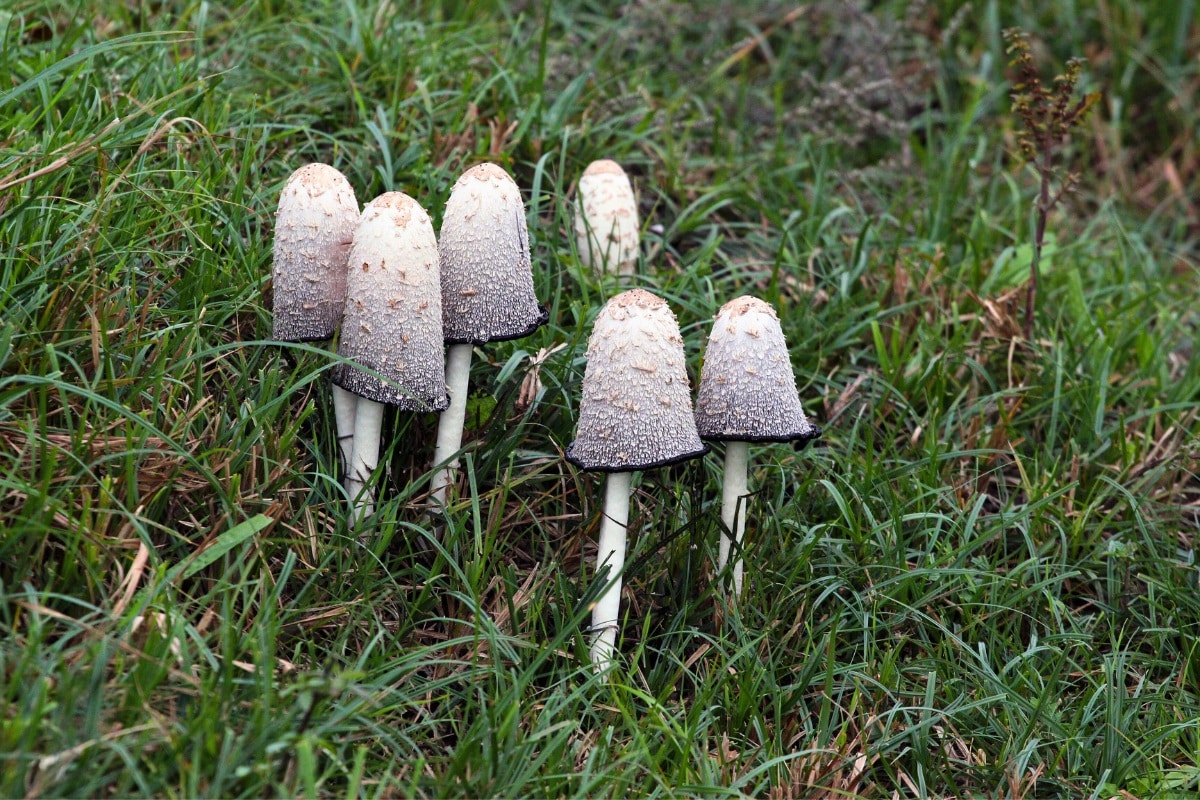
Shaggy Mane Mushrooms Short-Term Storage, AKA How To Prevent Deliquescing
Shaggy mane mushrooms start their countdown to deterioration the moment they’re harvested. These fungi initiate auto-digestion (or deliquescing) right after picking, which leaves you minimal time to use them.
Harvested shaggy mane mushrooms remain usable for only 24-48 hours before they become an inedible black substance. And, this is only if you store them properly. They start to deteriorate within an hour after being picked if they’re left out at room temperature.
It’s best if you can use the mushrooms within 4-6 hours of picking. Auto-digestion starts at the gill bottom (bottom edge of the cap) and moves steadily upward until the mushroom dissolves into a black, inky substance. Bruising, movement, and warm temperatures speed up this natural breakdown process.

Short-term storage
If you can’t cook the shaggy manes straight away, there is one great way to keep them fresh for a limited period of time. The best storage method is to place them in a jar of cold water in the refrigerator. Fully immerse the mushrooms in the water; do not leave any parts sticking out! The water reduces oxygen exposure (which is what speeds up the deliquescing) and can extend the mushroom’s life up to 48 hours. The water needs to be changed every 12 hours.
Another option is to put them in near-boiling water for a couple of minutes right after cleaning to prevent ink formation. Then, let them cool on a towel before cooking or freezing.
The other alternative is to cook them. Even then, though, they don’t have a long lifespan. Any dish prepared with shaggy manes is generally only good for a few days. The sautéed mushrooms will last 3-5 days in the refrigerator. They can also be blanched, frozen, or dried.
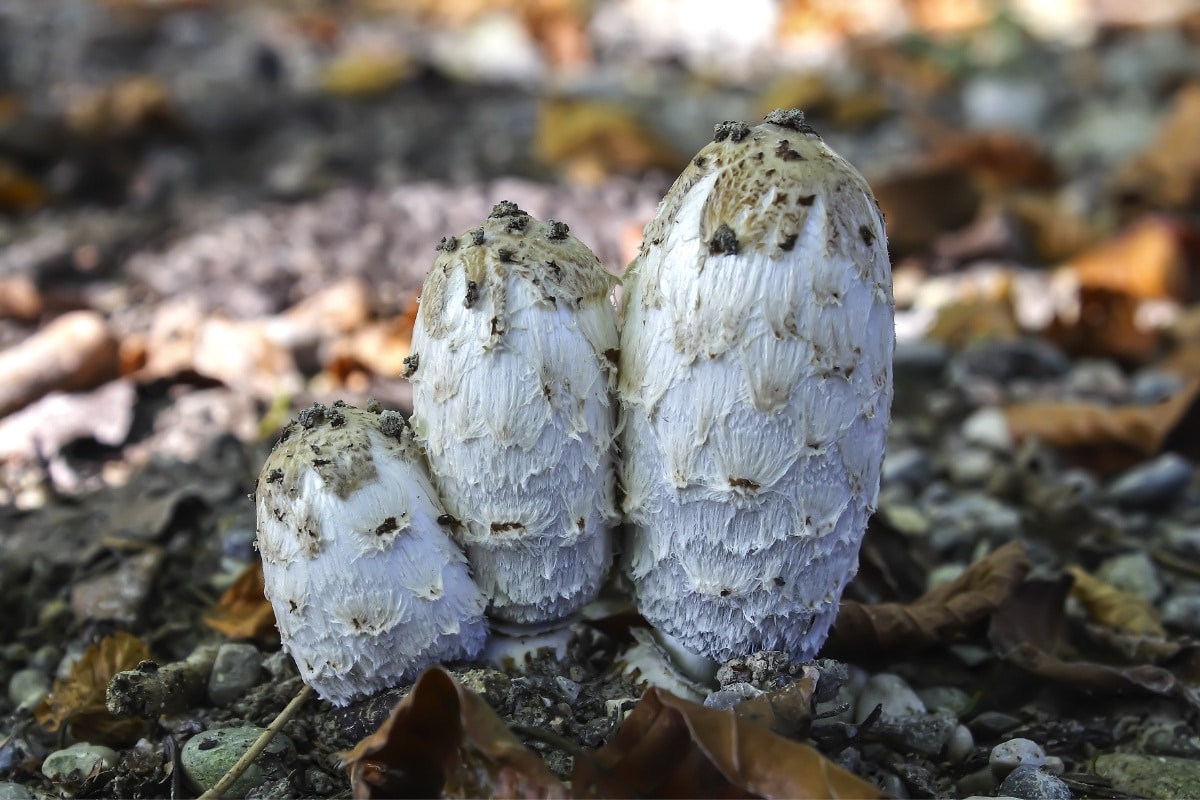
How to Clean Shaggy Mane Mushrooms
These are delicate mushrooms, so treat them gently during cleaning. They cannot withstand a robust scrubbing like boletes or chicken of the woods!
Check each mushroom and remove parts damaged by insects or mishandling. Use a sharp knife to trim any damaged or bruised parts. Hopefully, there won’t be many of these because you transported and stored them carefully.
Be sure to check specifically around the bottom edges of the cap for darkening or inkiness. The rest of the mushroom is still fine to use if you cut away the gray bottom edges. Just make sure the mushroom you keep is all white with white or pink gills, no black, no dark gray, no inkiness.
The stem base is usually dirty and should be cut away, if it wasn’t already done in the field. The whole above-ground part is good to eat, though the caps taste the best.
Shaggy mane mushrooms usually aren’t super dirty, but debris and dirt bits can get stuck in the scales and on the stem. The best way to remove this without damaging the mushroom is to use a dry paper towel or soft brush. Wipe the dirt off gently.
If there is stubborn dirt under the scales, try carefully scraping it away with a butter knife. You can give them a very quick rinse under running water, but try to avoid this. Their high water content and delicate caps make water exposure problematic, and it accelerates deterioration.
You may be wondering why it’s okay to store the mushrooms in water in the fridge but not wash them, and that’s a good question. The main reason is air exposure. When the mushrooms are completely immersed in water and placed in a cool refrigerator, it limits their exposure to air. The key is the total immersion. When you’re washing the shaggy manes, they are being exposed to water and air at the same time, and this is no good for their longevity.
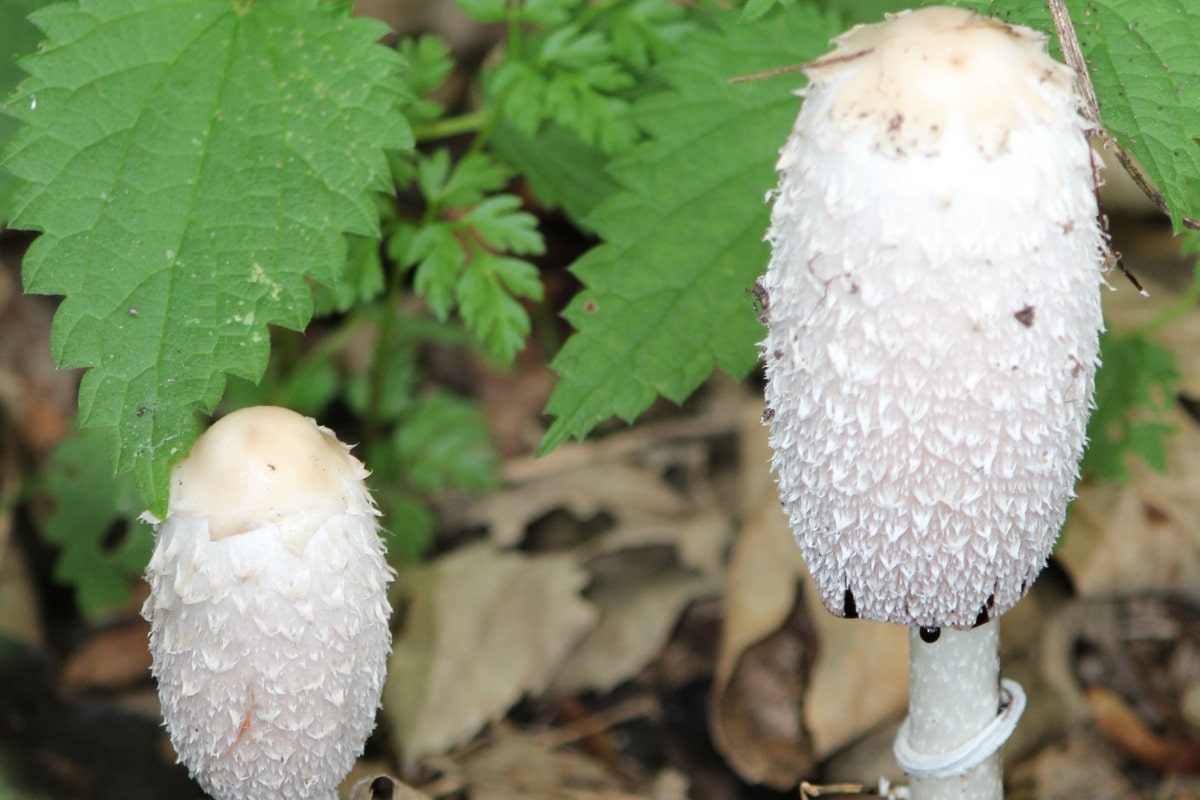
Shaggy Mane Safety and Serving Tips
These are some common questions that get asked about eating shaggy manes.
Shaggy Manes and Alcohol
Many people confuse shaggy mane mushrooms (Coprinus comatus) with mushrooms that react badly with alcohol. The mix-up happens because of their close cousin, the Alcohol Inky Cap (Coprinopsis atramentaria). The alcohol inky cap will make you very sick if you eat it while consuming alcohol (including drinking alcohol 2-3 days before and after!). The culprit is a compound in that inky cap species called coprine, which interacts with alcohol and gives you symptoms of alcohol poisoning.
True shaggy manes don’t have coprine, or they have minimal amounts. They will not make you sick when combined with drinking alcohol. Of course, though, that does come with the caveat that rare negative reactions have been reported, so new foragers should be cautious when eating these for the first time if they plan to drink as well.
Inky Shaggy Manes
The black parts of shaggy manes are edible after proper cooking. The natural enzyme process that causes the blackening is different from bacterial spoilage. The black inky liquid can be used to make striking pasta or risotto dishes.
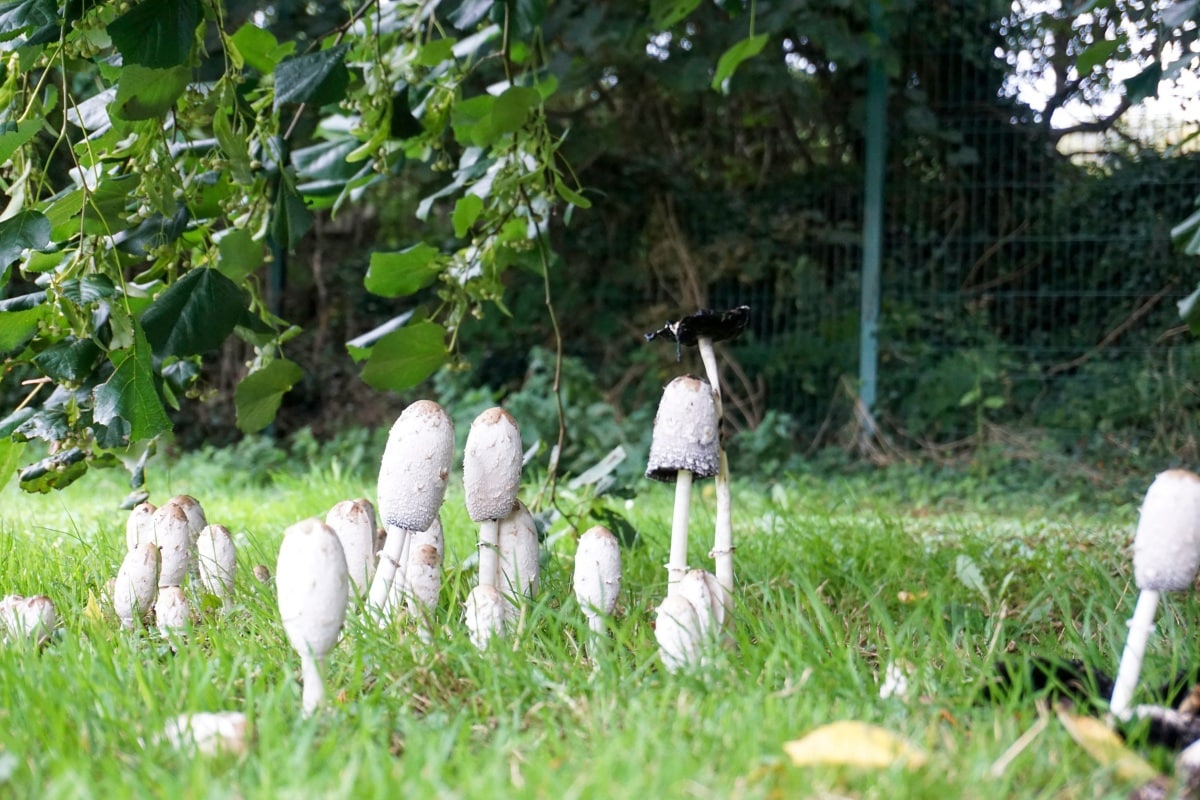
Best Ways to Cook Shaggy Mane Mushrooms
Because they are so delicate, shaggy manes need special care when being cooked. They easily fall apart and don’t hold up well to extended cooking. This is, of course, part of their allure, their delicate flesh, but it does mean extra attention during preparation.
A lot of the extra care needed has to do with their water content and the thinness of their flesh. As soon as the mushroom hits the hot pan, it starts to shrink, which only makes it more delicate than it already is. This can also make for a disappointing sauté, so make sure all the moisture is cooked off before eating or including other ingredients. Because of this, many people prefer them in a soup or sauce.
Shaggy manes have mild, earthy flavors that taste great with butter, olive oil, or cheese. Their subtle taste works well with eggs, pasta, risotto, and light meats. If you want to really enjoy the flavor of the mushrooms, avoid pairing them with strong ingredients that might overpower their delicate umami qualities.
These mushrooms don’t need a long cooking time. Don’t sear the heck out of them on high right out of the gate. They’ll completely fall apart if you treat them rough. They’re best when cooked gently over medium-low heat, 3-5 minutes on each side.
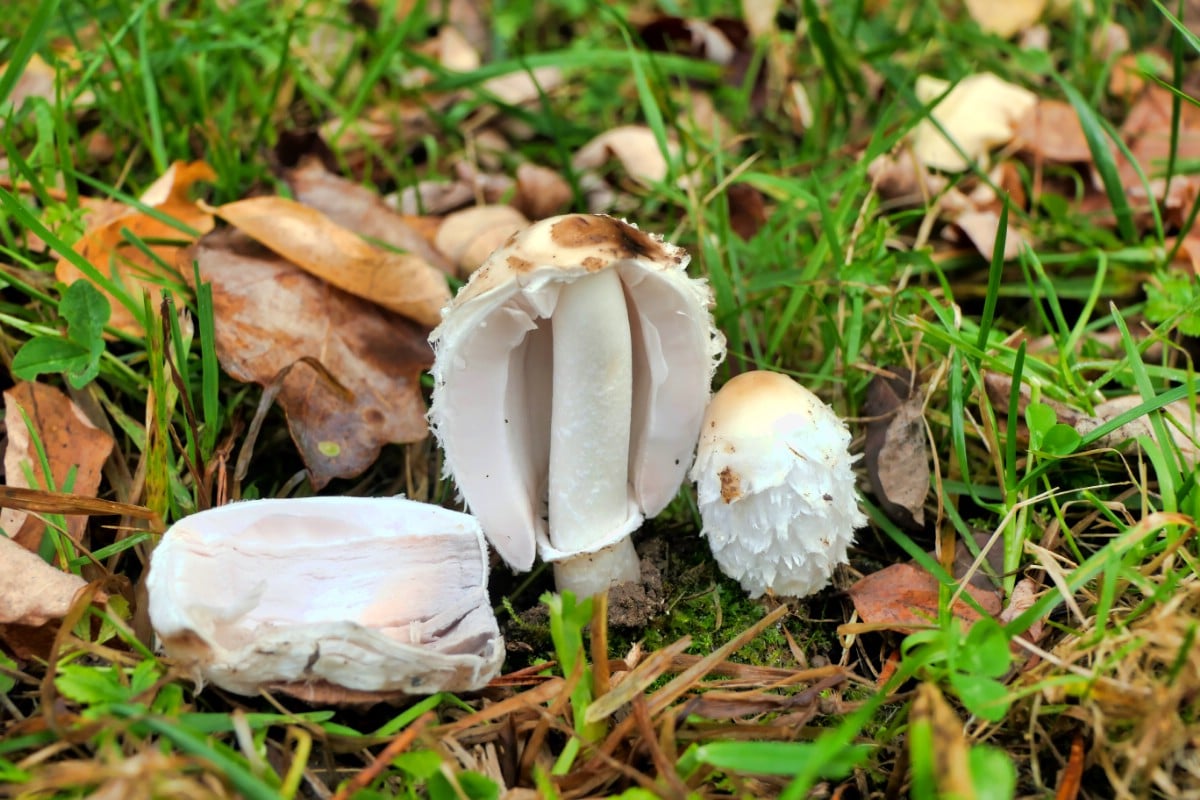
Simple sauté
One of the best and simplest ways to prepare shaggy mane mushrooms is to sauté them. IT’s also one of the best ways to really appreciate their delicate flavor and texture. If you’re trying them for the first time, we recommend doing the simple sauté.
The mushrooms can be sautéed whole, or you can slice bigger ones in half lengthwise. These tender mushrooms cook fast; they only need a few minutes on each side. They will start to fall apart a little if they’re overcooked. A quick butter sauté with chopped onions, salt, and a little bit of garlic is super tasty.
Air frying
Young shaggy manes cooked in the air fryer make an irresistible crispy snack. This works best with the very, very young shaggy manes with the cap edges still very closely wrapped around the stem. At this stage, they resemble popsicles with their long caps close to the stem. Older shaggy mane mushrooms are too open and much too fragile to withstand air frying.
Clean the mushrooms and then roll them in flour, dip them in egg, and coat them with seasoned breadcrumbs. Set your air fryer to 350°F and cook them for seven minutes without preheating. This gives you light, golden, crispy, and delicious mushrooms.
Soup
Shaggy manes make great soup, whatever their age. The mushrooms tend to dissolve or fall apart significantly when cooked in this manner, but that is fine in a soup. Soup is an excellent way to use older shaggy manes that won’t hold up to sautéing or air frying.
Even if the mushrooms start turning black, it’s fine. They still taste excellent – they’ll make your soup darker and keep their flavor. Start by cooking the mushrooms in butter until they release liquid. Then add your stock, vegetables, and seasonings. If you want to make it creamy, the mushrooms will puree easily. You can also add dairy or non-dairy milk to make the soup creamier.
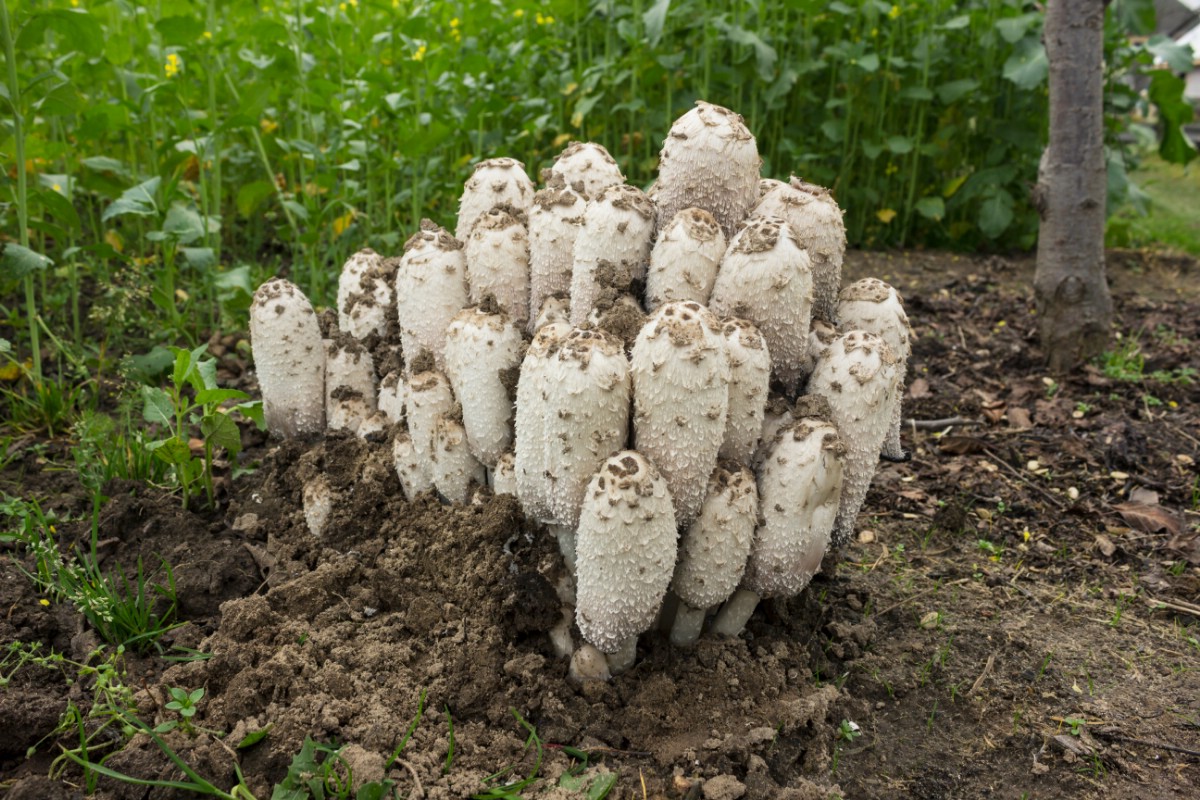
Using the ink
The black ink from melted shaggy manes is safe to eat and opens up some creative cooking options. This ink adds a mild mushroom taste and deep black color to any dish it’s added to. Mix the ink into softened butter with herbs and seasonings to make an eye-catching compound butter. Black pasta dough or risotto are other dramatic ways to use it.
Our Favorite Shaggy Mane Recipes:
- Shaggy Mane Mushroom Soup Recipe
- Parmesan Crusted Shaggy Manes
- Fried Shaggy Manes
- Shaggy Mane Summer Rolls
- Shaggy Mane Omelette Soufflé
- Alaska Shaggy Mane Risotto
- Shaggy Mane Mushroom Black Ink Pasta
- Cream of Shaggy Mane Soup
- Shaggy Mane Mushroom Waffles
- Pickled Shaggy Manes
- Shaggy Mane Ink (Puree)
- Shaggy Mane Mushroom Soup for the Soul
Preserving Shaggy Manes for Later Use
Shaggy mane mushrooms don’t last long, so you’ll need to preserve them quickly. Luckily, you have several reliable ways to save your harvest before it turns into black goo.
Freezing
There are several good methods to freeze shaggy mane mushrooms. These mushrooms are not good frozen raw; when they are rehydrated, the texture is only suitable for soups.
Blanching and Freezing
Blanching the shaggy manes in boiling water for 15-20 seconds. Then put the mushrooms straight into cold water. You’ll need to change the water several times to clean out any debris. Pat the mushrooms dry with towels and pack them into freezer bags. Squeeze out the air in the bags and put them in the freezer. These frozen mushrooms make great additions to soups, omelets, and sauces, but they are too soft to fry.
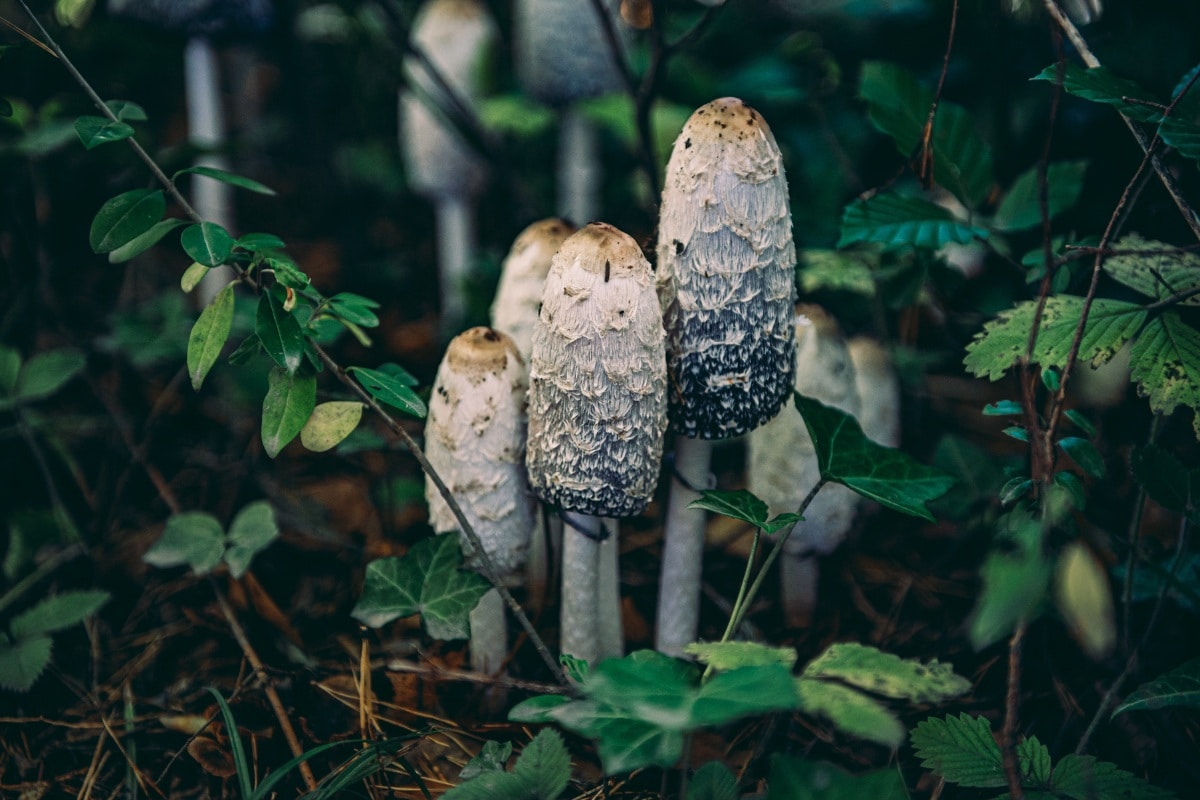
Cooking and freezing
Another freezing method is to sauté the shaggy manes until their liquid disappears. Then, let them cool completely before freezing in single portions.
Many foragers prefer to turn their shaggy manes into a purée. Sauté the mushrooms with a lot of flavor additions, like garlic, shallots, and wine. Then, blend the mushrooms while slowly adding oil. This creates “mushroom bombs” that can be added for a quick flavor boost for stocks, soups, and stews. They’ll last a week in the fridge or much longer in the freezer.
Dehydrating
Shaggy mane mushrooms can be dehydrated, but they don’t reconstitute to anywhere close to their fresh texture. Because they’re so fragile in general, drying them leads them to break, and you will often end up with a lot of small, broken bits of mushrooms. This is great, though, if you’re going to use them in soups, sauces, or risottos for flavor and not for texture.
Cut them into ⅜-inch thick slices and dry them in a dehydrator at 145-150°F overnight until they’re cracker-dry. These will keep for years in sealed jars. Both the mushrooms and their soaking liquid work great in soups or sauces.
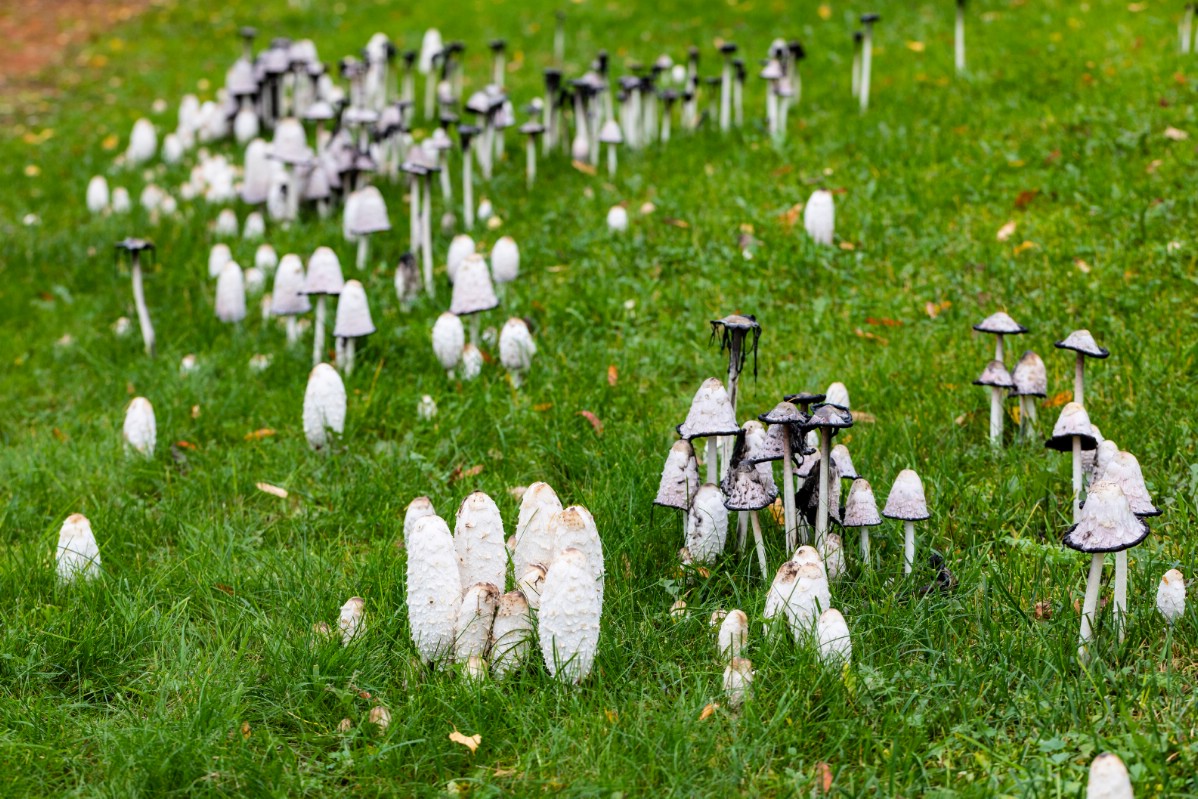
Common Questions About Cooking Shaggy Mane Mushrooms
How quickly should I cook shaggy mane mushrooms after harvesting?
Shaggy mane mushrooms should be cooked within 4-6 hours of collection, but preferably almost immediately. They begin to deteriorate rapidly after picking, so preparing them quickly is imperative. But, this doesn’t mean they can be kept out for that long before being cooked. They must be properly stored in the refrigerator within 1-2 hours, or they will start to deliquesce (melt into an inky mess).
Can I wash shaggy mane mushrooms in water?
It’s best not to wash shaggy mane mushrooms in water because they are so delicate and prone to breaking. Instead, gently clean them using a dry paper towel or soft brush to remove the dirt and debris.
What’s the best way to preserve shaggy mane mushrooms?
The most effective preservation methods are blanching and freezing, or dehydration. Alternatively, you can sauté them before refrigerating to extend their shelf life for a few days.
Are shaggy mane mushrooms safe to eat with alcohol?
Generally, shaggy mane mushrooms don’t cause adverse reactions with alcohol. However, it’s wise for newcomers to approach eating these mushrooms with caution their first time, as some people have reported rare negative reactions.
Can I eat shaggy mane mushrooms after they’ve turned black?
Partially blackened shaggy mane mushrooms are edible but not usually worth it except for as flavoring. They will fall apart very easily! Many chefs intentionally use the black liquid as a dramatic addition to pasta or risotto. However, just be sure the blackness is caused by natural deliquescence and they’re not spoiled


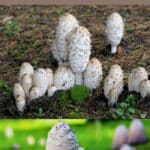


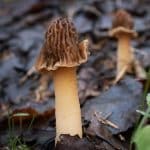
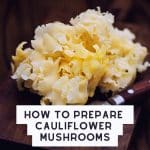
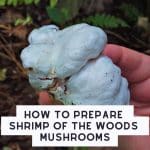

Leave a Reply